Understanding Your Horse’s Behaviour
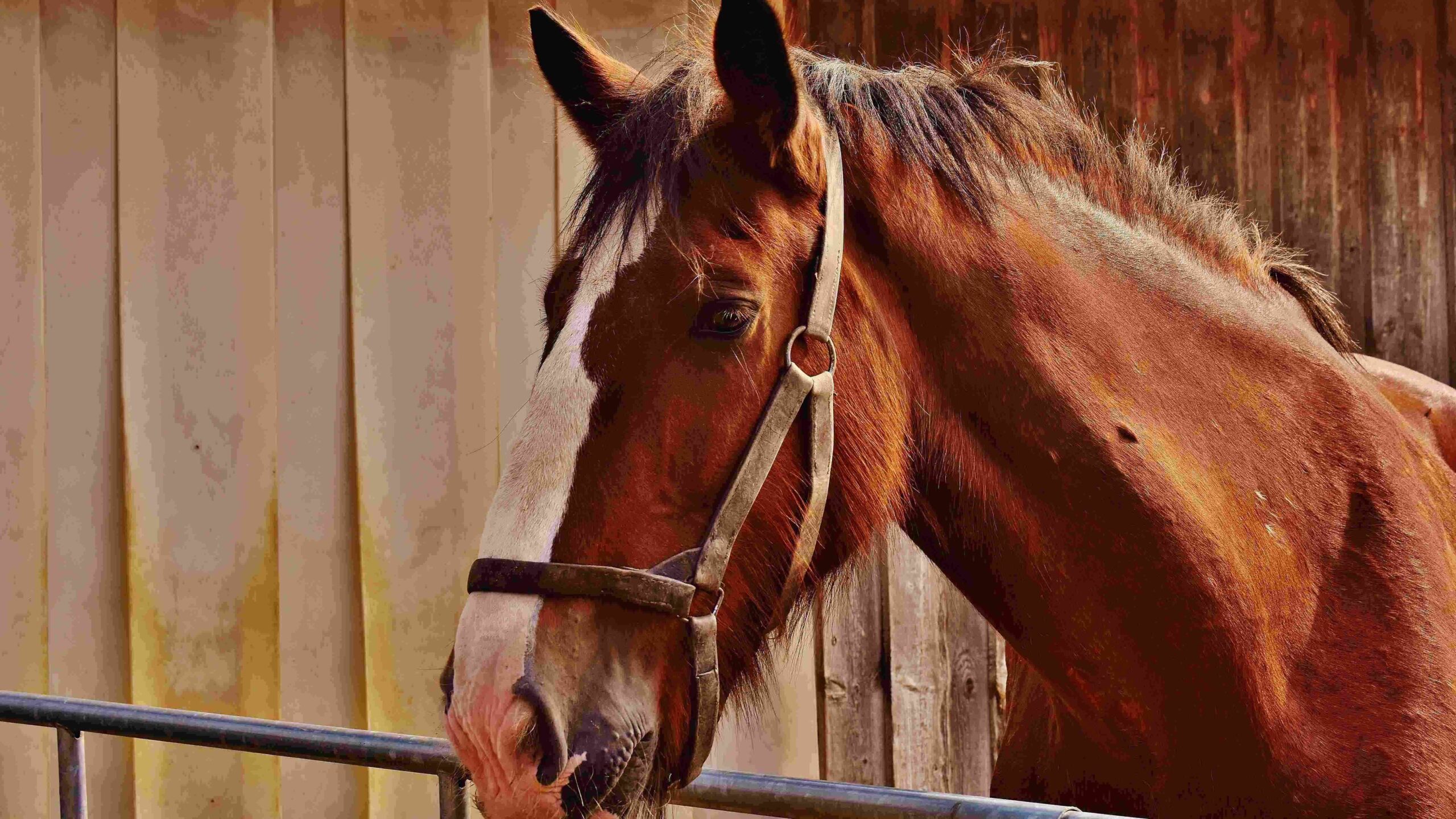
As a horse owner or rider, it’s important to recognise and understand your horse’s behaviour to make sure they’re happy and healthy. Horses are herd animals, which means they’re highly sociable and are very good at displaying a range of behaviours through their body language. By paying attention to their ears, eyes, mouth, and tail, you can tell how your horse is feeling and make adjustments to keep them happy.
All horses have their own unique personality and temperament, which you’ll no doubt come to know and love over time. But if your horse displays any behaviours that are out of the ordinary, there could be a reason why. Here, we’ll take you through all the key signs of troublesome horse behaviour, plus our tips to help you keep your horse calm and content. We’ll discuss the hallmarks of:
- A happy horse
- An aggressive horse
- A stressed horse
- A frightened horse
- Pain-related horse behaviour
- Seasonal horse behaviour
- Herd-bound horse behaviour
A happy horse

To recognise when your horse is unhappy, it’s important to familiarise yourself with the signs of a happy horse. This way, you’ll be able to spot any behavioural changes quickly and respond appropriately. A happy horse will have a very relaxed posture, with their ears up, alert, and facing forward. Their tail will be loose and free, their mouth will be closed, and their nostrils will be relaxed. They may also have one leg cocked, resting their weight on their other hind leg.
If your horse is relaxed but their head is lowered, it’s likely that they’re resting. While this still means they’re calm and happy, it does mean that you’ll need to approach them quietly and calmly to avoid startling them.
A happy horse is one who gets enough socialisation, exercise, and forage[1]. When these basic needs aren’t met, or when they’re in pain, they may ‘act out’. This is your horse’s way of telling you that something is bothering them.
An aggressive horse
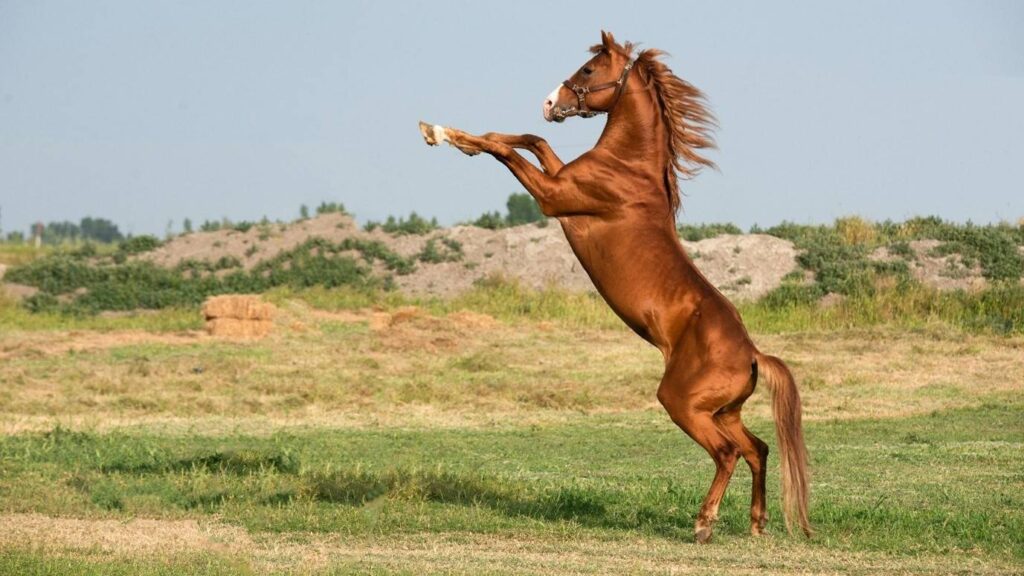
Horses are naturally calm and friendly animals, but aggression can happen now and again. A horse may suddenly act aggressively if they’re frightened, in pain, or feeling threatened. In some cases, horses will act aggressively to assert dominance, either over other horses or certain people.
The tell-tale signs of an aggressive horse include:
- Flattened ears that are pinned back
- Clamped or swishing tail
- Wrinkled nostrils
- Foot stomping
- Showing the whites of their eyes
- Pulling their lips back and baring their teeth
- Squealing
- Biting
- Kicking
- Rearing
It’s worth noting that some horses may play fight, which involves nipping. However, this is usually harmless. Horses will usually initiate play fighting by nudging each other, head-tossing, or approaching nose-to-nose, which is a good indicator that your horse is not angry, but is actually happy!
How to calm an aggressive horse
An aggressive horse can be dangerous, so it’s important to give them space if they’re showing any signs of anger or irritation. If this happens often ask your vet to check them over to rule out any pain-related causes. If he’s given the all-clear, then it’s best to call in a professional behaviourist or trainer to work with your you and your horse. There are a number of solutions for aggressive horse behaviour, depending on the reason your horse is acting out in the first place.
Pain
If the horse has suddenly started acting aggressively and it seems out of character, be sure to call your vet, as it could be a signal that they’re in pain. For example, if your horse is only aggressive when you groom a certain part of their body, it could be that they’re suffering from pain in that area. We’ll discuss more signs a horse is in pain later on.
Fear
A horse may begin to act aggressively if they’re in a frightening situation that makes them feel threatened or like they need to fight. The good news is that this can be fixed quite easily by slowly getting your horse used to whatever situation causes them to become aggressive. For example, if they start to behave aggressively while loading into their trailer, it could be because they’ve had a bad experience loading in the past. If this is the case, you can gradually help them to become more confident while loading. Make sure to read our horse travel and loading tips for advice on how to do this.
Feeding
You may notice that your horse only acts aggressively at certain times, such as when they’re being fed. This can happen for a number of reasons. It could be that they’re being protective of their space and don’t want anyone else to come near them. Another reason could be that they’re trying to assert dominance over other horses, or yourself, because they feel that their access to food or water has been threatened.
Food aggression may also be a learned behaviour. If your horse has acted aggressively in the past and has immediately been given food, they’ll learn that acting this way will be rewarded. So, one solution is to try negative reinforcement, such as avoiding feeding them until they’re calm. As you approach them with their feed, keep an eye on their response. If they show any signs of aggression, such as pinning their ears back or stomping their feet, back away with the feed. You may need to repeat this process a few times until they no longer respond aggressively. Once they’re calm, carry on with feeding and praise them.
Dominance
Horses will naturally turn to aggression to assert their dominance in the herd, but some may also do it with their owners, so it’s important to correct this behaviour as soon as it happens. To do this, you’ll need to reassert your role and train your aggressive horse to respect you. Lunging exercises are great for this. Take your horse out into a large field and keep them moving in circles until you’re ready for them to stop. If your horse halts without your command to do so, encourage them to keep moving forward by holding (but not cracking) the lunge whip at their hindquarters. It’s important that they see you as the one who is in control.
Make sure your horse also respects your space while lunging. To do this, keep the lunge whip up and point it at your horse’s shoulder. You want them to respect your space and command without being afraid. If you’re having trouble with your horse while lunging, be sure to take a look at our lunging tips from Australian Horsemanship’s Jason Webb.
A nervous or stressed horse
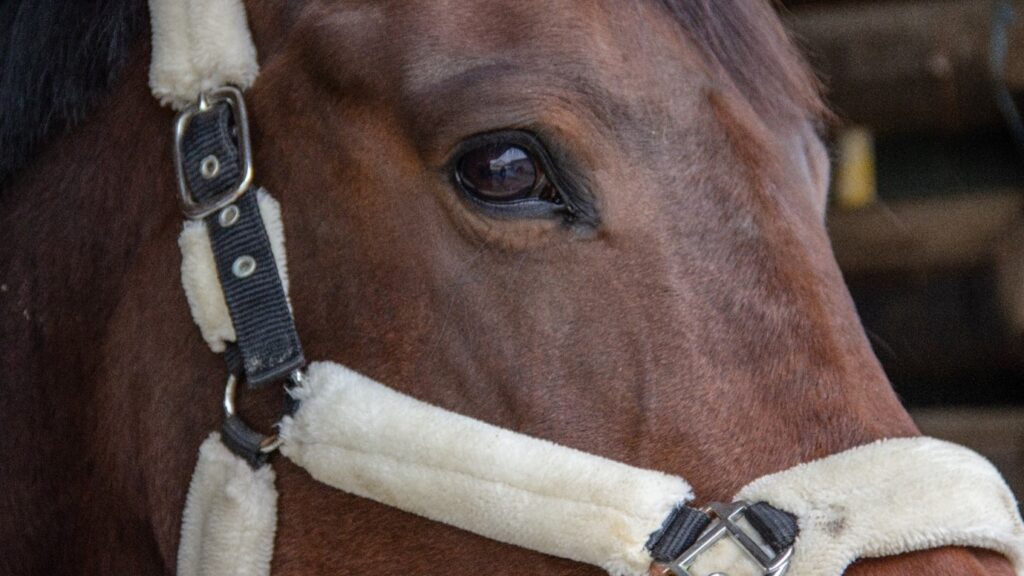
Horses can become stressed or nervous when exposed to certain anxiety-inducing situations. These situations tend to be those that go against your horse’s natural herding instinct, such as being in their stable for a prolonged period or being away from other horses (also called herd-bound behaviour). Mixed signals while riding can also cause stress in horses, as can changes in their routine, such as a new feeding schedule or even a change in the weather.
Sings of a stressed horse include:
- Ears pinned back or pointing in different directions
- Wide or wrinkled eyes
- Shaking or trembling
- Diarrhoea
- Increased heart rate
- Heavy breathing
- Sweating
- Tooth grinding
- Yawning
- Weight loss
- Biting
- Pawing at the ground
- Aggression
Stereotypical behaviour in horses
Actions such as still walking (pacing back and forth or in circles), cribbing (biting an object and sucking in air), and wind sucking (arching the neck and swallowing air) are other common signs of stress or anxiety in horses. These are called stereotypical behaviours (or stereotypies) as they are generally repetitive and have no apparent function. Stereotypical behaviour is common in horses whose stress or nervousness is caused by boredom.
Not all horses who display stereotypies are bored, nervous, or frustrated. Some may be predisposed to these kinds of behaviours through their genetics or due to neurological factors. If this is the case, it’s worth consulting an equine behavioural specialist for help. In some instances, these behaviours can negatively impact the horse’s health. For example, cribbing can wear down their teeth. So, it’s important to investigate if your horse shows these types of behaviours.
How to calm a stressed or anxious horse
As with any sudden behavioural change, your first response should be to call the vet to rule out any health issues or pain that may manifest as stress. If your vet gives them a clean bill of health, your next step is to determine what situational factors could be the root cause of your horse’s behaviour. You can calm a stressed or anxious horse by minimising the stressful situation as much as possible.
Routine
Horses are creatures of habit, so keeping them to a schedule for feeding, grooming, and turning out means they’ll always know what to expect from their day. A consistent routine also ensures they’ll get plenty of exercise and socialisation. If you do need to change your horse’s routine, try to do so gradually to give them time to acclimatise.
While horses enjoy routine, they can also become bored if they don’t get any variety at all. To make their days more exciting, without causing stress, consider mixing up your training regime now and then. For example, you could try some pole work exercises twice a week to keep your horse engaged.
Stable
Horses that are stabled regularly need plenty of enrichment so make sure that their stall is comfortable and that they have plenty of toys. Some horse owners also like to hide food around the stable for their horses to find.
Be sure to check the temperature, too. In summer, there may be a risk of your horse overheating, which can cause stress. You can keep them cool by dousing them in cold water and providing them with a fan in their stable. In winter, they should be provided with the correct rug to keep them warm. You can read our guides to summer and winter horse care for even more advice.
Situational anxiety
If your horse becomes stressed or nervous in response to a situation that you can’t avoid, such as loading into a trailer, you can ease them into it and build their confidence by exposing them to the situation gradually. This may take some time, so it’s important to be patient to avoid making the situation even more stressful for your horse. Be sure to give them plenty of positive reinforcement when they do something right, or when they cope with the stressful situation calmly, so they can start to associate the event with something good.
Rider training
If your horse gets stressed while riding and there doesn’t seem to be any other cause, it could be due to your riding position or aids. Horses are very intuitive and can pick up on non-verbal cues from their rider. This means if you’re feeling tense or stressed yourself, you may be signalling this stress to your horse through very tiny cues. For example, you may tense your legs and put more pressure on their sides.
A similar issue could be if you are giving your horse mixed signals, such as applying pressure from both legs but also putting pressure on the reins. Your horse won’t know whether you want them to move forward or halt, and they’ll start to become stressed or anxious when they don’t know what is expected of them.
Working with a trainer is the best solution to this. They can help you identify and rectify any issues with your riding position or aids, and become more relaxed and confident while riding. Rider position is a common problem for even experienced riders and we have plenty of resources here at Horse & Country to help you correct your position, like our riding position guide and our position masterclass with Simon Grieve.
A scared horse
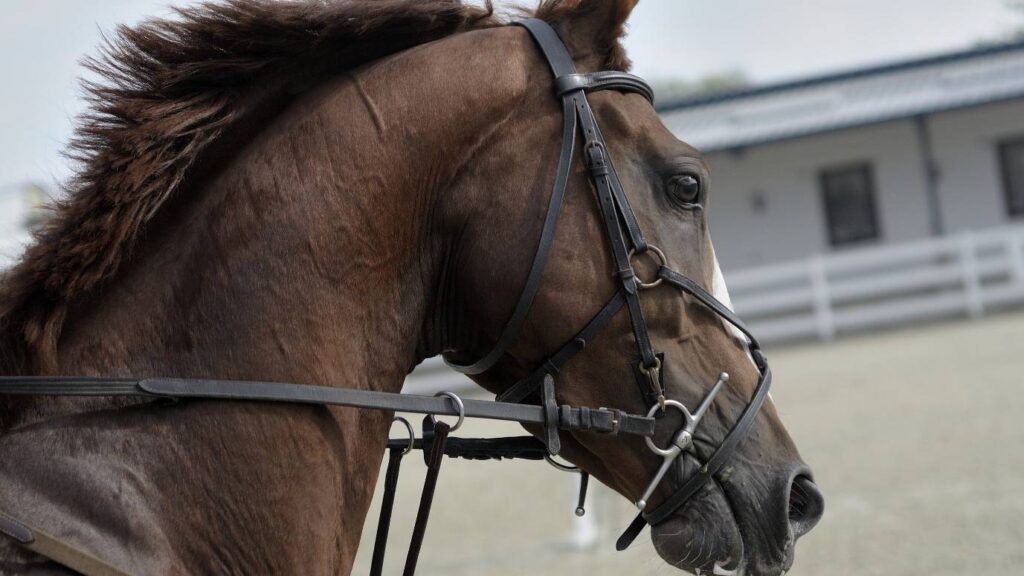
You’ve no doubt already concluded that horses can be easily spooked. They have incredibly sharp instincts and their natural response is usually to flee, rather than fight, if posed with a frightening object or situation.
You’ll know if your horse is scared if they:
- Widen their eyes
- Flare their nostrils
- Curl their muzzle
- Raise their head
- Flick their ears back and forth
- Tuck their tail down against their body
- Snort or blow
- Back away from an object or bolt
How to calm a scared horse
Many of the signals of a frightened horse indicate that they’re investigating their surroundings to judge the significance of the threat. For example, they widen their eyes to increase their vision and flick their ears to search for unusual noises. As a rider, staying calm in this situation is therefore vital to avoid spooking them even more.
As soon as your horse shows signs of fear or distress, reassure them by talking to them in a calm voice and ask them to raise their head. Remember to stay completely relaxed. Any sign of tension in your mannerisms or voice can make your horse think that there’s a reason to panic. So, if you need to move, make sure you do so slowly and gently.
Allow your horse to investigate the object under their terms. This means giving them an opportunity to check the potential threat but also back away if they feel they need to. Do not turn them away from the object, as your horse will panic if they can no longer see it. If your horse remains calm, be sure to reward them with plenty of praise.
Training
On another day, when your horse is calm, it’s a good idea to begin training them to become less sensitive to frightening objects. You can do this by working with an expert trainer to gradually desensitise your horse to the object that spooks them. In episode two of our Listening to Horses Specials, Annemarie van der Toorn looks at techniques that can help spooky horses deal with frightening situations, so make sure to watch for essential training tips.
Pain-related horse behaviour
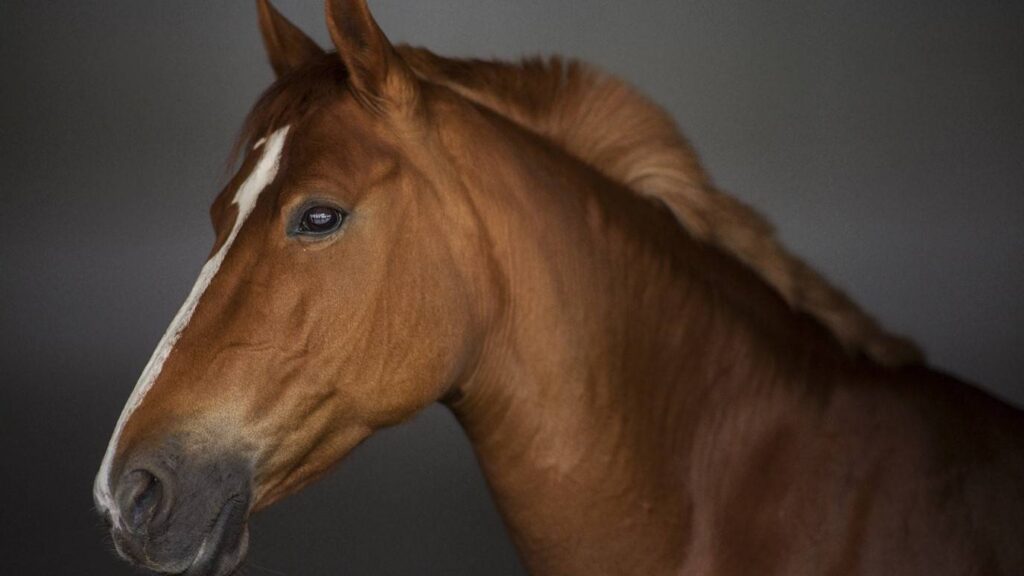
We’ve briefly touched upon the ways pain can cause behaviours like aggression or stress, but if your horse is dealing with a health issue, they may respond with more subtle body language. Some signs a horse is in pain include:
- Restlessness
- Tension
- Lowered ears
- Wrinkled eyes
- Intense staring
- Open mouth
- Tongue out
- Exposed teeth
- Teeth grinding
- Wrinkled nostrils
- Head tossing
- Altered posture or stride
- Constantly shifting weight
- Being over-bent
- Being cold-backed — Fidgeting or showing signs of discomfort when saddling can indicate back pain
- Biting painful areas
- Hesitation to move
Not all horses will react to pain in the same way, so it’s a good idea to pay attention to what is normal for your horse. If they behave out of the ordinary, it’s wise to speak to a vet who will be able to check them over and identify any reasons for their behavioural change.
It’s worth bearing in mind that your tack could be causing pain for your horse if it’s too tight or doesn’t fit quite right, so make sure to check to determine if this is the cause for your horse’s behaviour by getting it checked regularly by a qualified saddle fitter.
Seasonal horse behaviour
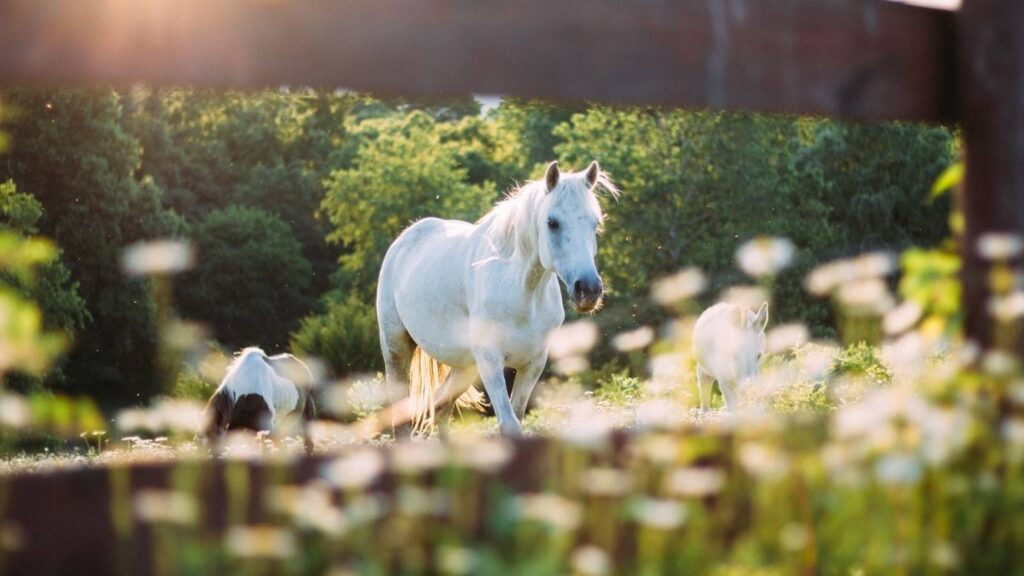
While certain situations can affect how your horse acts, you may also notice that your horse’s behaviour changes with the seasons, largely due to routine and weather changes.
Spring and summer behaviour
When the weather is warm and the days are long, your horse will no doubt love all the time they’re spending out on rides or lazily grazing in the sun. In fact, many owners note that their horses are much more energetic at this time of year. That being said, some owners may find that their horse is a bit trickier to handle during this time due to the fresh spring grass their horse is grazing on.
At the beginning of the season, new spring grass has much higher levels of carbohydrates, sugars, and protein and a lower fibre and magnesium content than grasses that grow later in the year. It’s thought that this is linked to low temperatures at night and bright sunshine during the day, which increases the content of sugar, starch, and fructan[2]. Eating large amounts of lush spring grass can cause a number of health and behavioural changes in horses.
Energy levels
Higher levels of carbohydrates in your horse’s diet can increase their energy levels. This means you may find your horse is a lot more active and willing to work after grazing on spring grass. That being said, spring grass can also cause horses to become more nervous, spooky, or too excitable, which can make them more difficult to control.
Health problems
Alongside an increase in energy, spring grass can cause a variety of stomach problems in horses. This is because horses can struggle to digest the high levels of carbohydrates in the grass, especially after they’ve been eating winter hay. This can imbalance their microbiome, or lead to health issues such as colic or laminitis, particularly in horses with equine metabolic syndrome. These health problems can also lead to behavioural issues, such as aggression or stress, as well as wood chewing due to a lack of fibre.
Solutions for spring grass horse behaviour
To help prevent any behavioural or health problems as a result of spring grass, it’s best to manage how much your horse eats. Any disruption to their usual feeding routine can cause problems like colic, and this includes dietary changes as a result of grazing. Treat spring grass grazing as a major dietary change and try to ease them into it with short pasture times at this point in the year by strip grazing or putting on a grazing muzzle for a few hours a day. Some studies have also found concentrations of carbohydrates are higher in grasses later in the day, so restricting grazing times to early morning and later in the evening can help control the amount your horse is eating[3].
Some horse owners also choose to provide hay in the pasture during spring as this can provide the essential fibre that is missing from lush spring grass. It may also be worth feeding your horse a balancer and probiotic supplement to keep their gut bacteria in check.
For more grazing and feeding tips, be sure to take a look at our guide to managing your horse’s weight on grass.
Autumn and winter behaviour
When the weather turns cold, you might find that your horse doesn’t behave as they did in the warmer months. They may become a little more lethargic, stubborn, and less willing to exercise.
As mentioned earlier, horses can become anxious or stressed when their usual routine changes. When autumn and winter arrive, you’ll likely be turning your horse out less as you get ready to stable them through the coldest months. Not only does this mean they’ll be spending more time indoors, but it also means a change to your horse’s diet, as they’ll be grazing much less at this time of year. This change can be stressful for your horse, and any sudden alteration in their diet could cause colic, which could be another contributing factor to behavioural issues.
To keep the process as stress-free as possible, and to reduce the likelihood of any behavioural changes, be sure to make any adjustments gradually over a couple of weeks to give your horse a chance to adjust.
The winter also comes with harsh weather like rain and wind, which could frighten particularly spooky horses. This can happen for a number of reasons. First of all, the wind can cause objects that are normally stationary to move, which your horse may perceive as a threat. The wind can also blow an object suddenly into your horse’s path.
Horses are also very perceptive to sound. Their range of hearing is much larger than ours as they’ve adapted to be very sensitive to their surroundings in the wild. The wind and rain can mask a lot of ambient sounds or cause new sounds such as rustling leaves, which can frighten your horse.
Training a horse not to spook in the wind
Many horses spook in the wind or rain, and as it’s a natural instinct to be wary of loud noises or sudden movements, it can be tricky to completely desensitise your horse to bad weather. That being said, building your horse’s trust in you can help them remain calm when it’s wet or windy.
Of course, it’s a good idea to avoid going out or turning your horse out in extremely windy weather. But, if you’d like to desensitise your horse to light winds, try doing some groundwork with them on windy days. Go somewhere where they usually feel safe and secure and practice a few of your favourite exercises. If your horse does spook, try to carry on as normal.
While training your horse to be calm, make sure to stay relaxed yourself to send the right signals to your horse. Often, riders can pre-empt a horse spooking in the wind and become nervous. The horse can then pick up on the rider’s tension and become stressed, exacerbating the problem.
Mareish behaviour in horses
Mares are particularly likely to display behavioural changes as a result of the seasons, due to hormone fluctuations. Through the spring and summer months, you may find that your horse is a little more grumpy or aggressive when she’s in heat — this is known as ‘mareish behaviour’.
A horse’s oestrus cycle is triggered by light, which is why mareish behaviour is so common in the spring and summer months, when they days are lighter and longer. A mare’s cycle typically lasts around 21 days, with heat lasting for a week or so. Because this behaviour is caused by hormones, rather than environmental factors, there isn’t much a horse owner can do to reduce these effects. However, you can track your horse’s cycle and plan training and riding sessions for when she’s not in heat, as she’s more likely to be responsive and cooperative.
Along with grumpiness, your mare may display other behaviours that indicate that she’s in heat. These include:
- Anxiety
- Aggression
- Irritability
- Lethargy
- Sensitivity to touch
- Lack of focus
- Tail raising
- Frequent urination
- Herd-bound behaviour
When she’s in heat, it’s important not to push her to do any strenuous work or to do any activities that make her uncomfortable. For example, if she’s sensitive to touch during this time, avoid grooming her in sensitive areas. Instead, give her light tasks that require her to focus, such as groundwork. This can help reduce any negative behaviours common during heat, without being too laborious.
Patience is important too, so avoid punishing your horse for mareish behaviour. As it is caused by hormonal changes, any negative behaviours that happen during heat are out of her control. Instead, try to make this time comfortable for her.
If mareish behaviour becomes a major problem, for example if it becomes an issue of safety, be sure to speak to your vet.
Herd-bound horse behaviour

As we’ve mentioned, horses are herd animals, which means they feel at ease in large groups. It’s their natural instinct to be part of a group for safety, and the hierarchy of a herd means horses will often develop one or two close relationships within it. This can provide a great source of security for each horse, but this also means that some horses can become anxious or stressed when they’re separated from their herd as they’ve lost their safety net. This is referred to as being ‘herd-bound’ or ‘barn sour’.
A herd-bound horse will show signs of distress. They may refuse to do as you ask while riding or training and attempt to rush back to their barn or paddock. Horses left back in the field may pace up and down whinnying.
How to handle herd-bound behaviour
The good news is that horses usually see their owner as a part of their herd, which means bonding with them and training them to feel safe with you can help avoid any herd-bound behaviour. The best way to do this is through desensitisation.
To get them used to being alone, take your horse away from the herd for a short period. You don’t have to go far — just around the corner from the paddock is a good start. Reward them for being calm, then walk them back to the herd. Keep repeating this, making sure to reward any good behaviour. As your horse gets used to being away from the herd, you can extend how far away you go.
This training works for two reasons:
- They’ll be rewarded for their calm behaviour with a treat, so they’ll associate this behaviour with praise.
- They’ll learn that the separation is temporary, so they’ll be less likely to panic the next time they are taken away knowing that they’ll return soon enough.
While they’re away from the herd, try to do something nice instead of training, such as grooming or giving them a treat. This will teach them to enjoy the time they spend alone with you, so they’ll start to see time away from the herd as a positive experience.
As a horse owner, it’s important to get to know the subtle nuances in your horse’s behaviour. Their body language can tell you exactly how they’re feeling, so you know what you need to do to keep your four-legged friend happy and healthy.
For even more horse training tips, be sure to take a look at our equestrian news and guides and our series and shows, where you’ll find advice from some of the industry’s biggest experts. Join today to get access to hundreds of hours of exclusive content only available to Horse & Country members.






